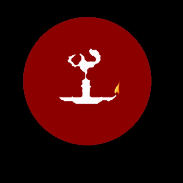Transport
By car
The road network is made up of 3.320.000 km of roads, of which 1.520.000 kms are paved. The Indian road network is not in a very good state. A lot of unpaved roads are hardly practicable in the monsoon season. Very few highways exist and most of the roads are narrow. Moreover the traffic is often very dense, and to the cars and trucks are added pedestrians, bikes, carts, animals… Regarding the traffic regulations, except driving on the left, only one rule seems to exist: priority to the biggest vehicle. Finally, traffic signs are rare. Driving in India is difficult and highly inadvisable: it would be much better and safer to rent the services of a driver. If you take the risk to drive however, you should have an international driving license.
By rickshaw or bus
The term “rickshaw” includes both the auto-rickshaws (motorized vehicle) and the bike-rickshaws, not motorized, fewer and less efficient… The rickshaw drivers earn a commission from certain shops and hotels, so they will try to take you there instead of taking you to your hotel. Ask that they take you to your hotel’s street instead of giving them your hotel’s name. Also always ask them to use the odometer and if they refuse, always negotiate the price before the ride, if possible after asking an Indian the estimated price of the ride. If you are two people, ask if the announced price is for one or two people.
The wide Indian bus network allows travel at a low cost over the entire country. However, the buses’ comfort is very variable depending on the lines. The tourist destinations are served by comfortable buses (deluxe category) equipped with reclining seats, tinted windows, and fans or AC. However, on the rest of the bus network, you will find poorly maintained, crowded, noisy, old buses (ordinary or express category). Traveling in these conditions can still be an interesting and authentic experience of ordinary India. Generally speaking, you should use the bus for short day trips (the bus speed won’t exceed 40 km/h, and the Indian roads really are dangerous at night).
By train
Cheap and boasting with a wide network, the train is a practical way to travel around India, and riding a train in India is an experience that is not to be missed. Two types of trains exist the express – that is to say, the intercity trains that connect the important cities of the country – and the passenger trains which travel more locally and stop everywhere. You will mostly ride express trains.
In theory, only two classes exist, but these are divided into sub-categories depending on the level of comfort they offer: AC, berths, bench seats… It is, therefore, possible to go for very comfortable travels or, on the contrary, to have a more authentic experience and meet the local population by choosing the cheapest, and therefore more popular classes. It is recommended to reserve your seat well in advance, especially if you want to get a berth because the seats are subject to quotas (tourists, women, elderly people, families, students…).
By plane
The airline network is well developed: the big cities and places of interest are served by regular (though not always daily) flights. The main airlines are Indian Airlines (IC) and Jet Airways (9W). Proceed to check-in 2 (for Indian Airlines) to 1 (for jet Airways) hour before the flight’s departure. But be careful: sometimes the flights don’t respect the scheduled timetable or are simply canceled. You should make all the necessary verifications with the airline you are flying with beforehand. In the Himalayan regions, flights are also subject to the weather conditions and can be subject to many modifications: delay, cancellation, or even early departure. For your return flight, proceed to check-in 2:30 to 3 hours before the departure (considering the current safety regulations) and don’t forget to confirm your return flight to the chosen airline, 72 hours before departure. Please note that the safety regulations are now very strict for national and international flights. Also make sure to bring solid luggage and bags, since the luggage is often mishandled.


